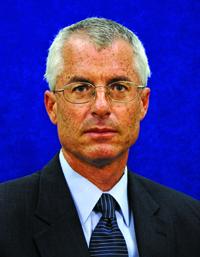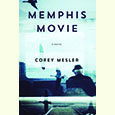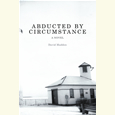Counterterrorism from the Inside
Philip Mudd analyzes the federal response to terrorism
Philip Mudd’s Takedown purports to be Inside the Hunt for Al Qaeda, and in some sense it is. More than that, though, it is a consideration of the way the American intelligence establishment responded to 9/11 and subsequent terrorist threats. It’s also a career memoir. Mudd, who now lives in Memphis, began in 1985 as a junior intelligence analyst at the CIA and rose to important managerial positions at both the CIA and the FBI. A dedicated insider, he respects the context in which he flourished and the people he worked with in the complex counterterrorist bureaucracy.
 After 9/11, intelligence gathering and analysis fell to an array of federal agencies: the State Department, the Department of Defense (with its National Security Agency), the new Department of Homeland Security, and the National Counterterrorism Center were all involved in the hunt for Al Qaeda. Collecting and presenting all the analyzed data to decision-makers required frequent meetings—often several a day—at and between each department, agency, and bureau. Mudd was there in the thick of it, working for George Tenet and Robert Mueller and frequently meeting with people like Colin Powell, Dick Cheney, and Scooter Libby. He has nothing negative to say about anybody. As a dedicated participant, he believed in the system and saw positive developments in the wake of 9/11 as the hardwired bureaucratic reluctance to share information fell away.
After 9/11, intelligence gathering and analysis fell to an array of federal agencies: the State Department, the Department of Defense (with its National Security Agency), the new Department of Homeland Security, and the National Counterterrorism Center were all involved in the hunt for Al Qaeda. Collecting and presenting all the analyzed data to decision-makers required frequent meetings—often several a day—at and between each department, agency, and bureau. Mudd was there in the thick of it, working for George Tenet and Robert Mueller and frequently meeting with people like Colin Powell, Dick Cheney, and Scooter Libby. He has nothing negative to say about anybody. As a dedicated participant, he believed in the system and saw positive developments in the wake of 9/11 as the hardwired bureaucratic reluctance to share information fell away.
That was only possible because they faced a real scare. For the first few years after 9/11, the terrorist threat was taken very seriously, and the War on Terror and the “matrix of threats” kept everybody’s attention. At first Al Qaeda seemed to be winning. But then the Taliban was swept out of power in Afghanistan, depriving the network of its safe haven and its ability to organize and launch mass-destruction projects. Radicalized recruits with technical knowledge were scarce, and many bombing attempts were bungled. Important leaders in the movement were captured and interrogated (yielding important scraps of intelligence) or killed, increasingly by drone strikes. Central direction of the movement dissipated. Independent regional affiliates began to apply the terrorist ideology to their local agendas, but they sometimes overdid it, as in Algeria and Egypt, where the killing of innocents—many of them Muslims—began to weaken the terrorists’ popular support. While some have complained about “the inability of the United State to execute a clear, long-term public diplomacy strategy on terrorism,” Mudd writes, he believes “this was not, and is not, a critical problem, because Al Qaeda’s actions have already undermined its message irretrievably.”
Mudd, who resigned from government service in 2010, writes with the reserve and detachment of an intelligence analyst. His job is to summarize what he knows, admit what he doesn’t know, and avoid gut opinions and policy recommendations. And what Mudd knows is every thread in the web of Washington intelligence and counterterrorism bureaucracies, and that’s what Takedown is about. Had his background been in field operations, Takedown might read more like an international spy thriller. Still, his description of the competent and committed public servants he worked with should bolster confidence in our safety and our respect for government generally.


